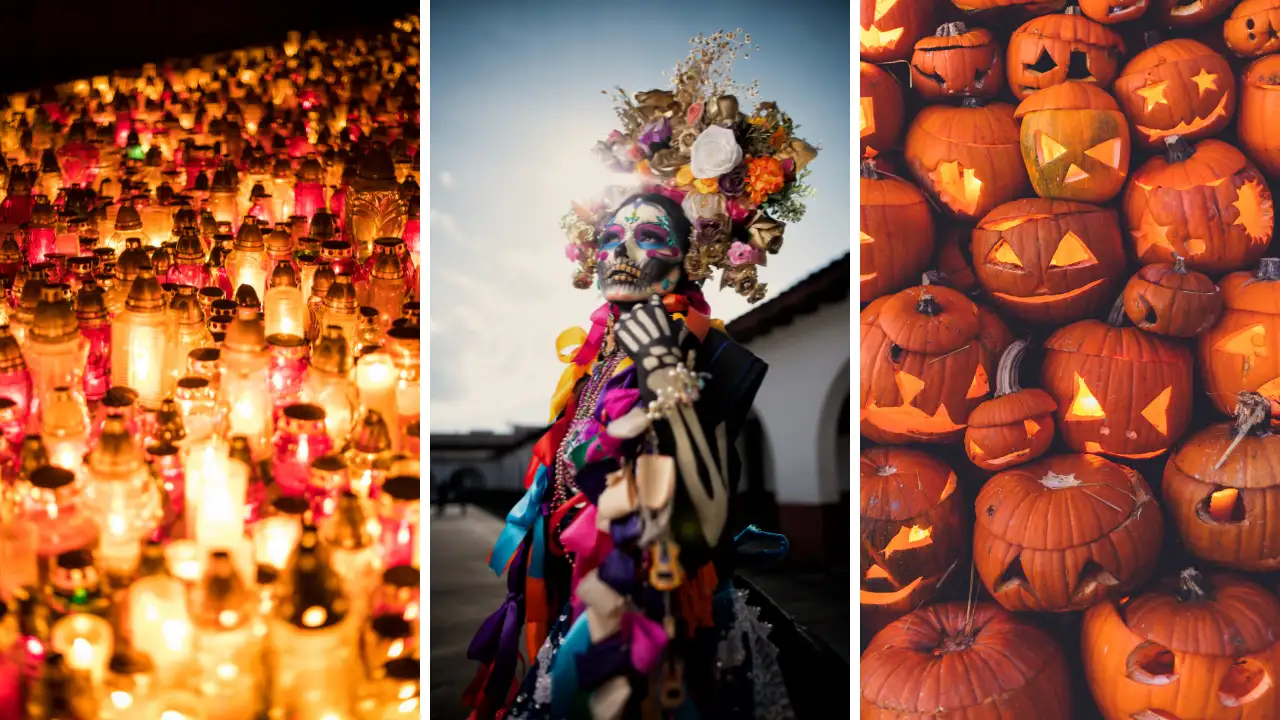Copyright timesnownews

For the majority of people, Halloween means pictures of children doing trick-or-treat, houses decorated in a scary manner, and ghostly fun. But the festival that we see nowadays is only the facade of an old desire to keep the memory of the dead. In fact, people all over the world celebrate the three days (31st Oct, 1st and 2nd of November) as a period when the living come down from their daily burden and meet the dead. From the vibrant celebration of Mexico’s Día de los Muertos to Japan’s quiet Obon festival, these festivals follow the universal drumbeat of life and death — life inevitably leads to death, and it is only fair to show your respect, love, and sometimes even throw a joyful party. Mexico: Día de los Muertos Of all the different ways of celebrating the dead, the Mexican Day of the Dead is the most extravagant and widely recognised. On the 1st and 2nd of November, the Mexican people celebrate the memory of the dead with colour and music instead of grief. Members of the family build complicated altars—ofrendas—that are covered with pictures of the dead, marigold flowers, symbols of life, lighted candles, and foods that are always part of the table of the beloved ones. Calaveras (sweets in the shape of skulls) and people’s faces decorated as skeletons are glimpses of the mixture of happiness and seriousness. Bright music and noise fill the streets, while the smell of pan de muerto, which is a bread made for the occasion, spreads from the oven to the whole city. The point being made by all this is that remembering the dead can be done in a very pleasant and nice way, and it doesn't always have to be dull. Ireland: Samhain, the Root of HalloweenIt was the Celts in Ireland who celebrated Samhain, a festival that marked the end of the harvest and the beginning of winter, long before Halloween came into existence. The belief was that the boundary between the world of the living and that of the spirits became very thin during that time. To keep away evil spirits, fires were lit and food was offered to ancestors. A majority of the Halloween customs, like wearing costumes and carving pumpkins (in the past, it was turnips), can be traced to this old Celtic festival. Ireland continues to cherish the fact that it is the country where the original meaning of Halloween was born. Japan: Obon Festival The Japanese Obon is held in August, but its spirits are in line with Halloween. The main event of the festival is that people believe the spirits of the dead visit their living relatives. Temples and homes are illuminated with lanterns to make the way for the spirits, and people spend their time dancing, eating, and remembering the dead during Obon. Bon Odori is a folk dance that is presented in towns and villages, and it represents the reunion of the living with the departed. After the party, lanterns are thrown into rivers and seas so that the returning angels may carry them. The dim light of those lanterns is a perfect metaphor for the beauty and calmness with which the Japanese deal with death. Guatemala: Festival of Giant KitesOn every 1st November, Guatemalans celebrate All Saints’ Day by flying massive, handmade paper kites that reach the sky. These breathtaking works of art, which are also called Barriletes Gigantes, with some of them being several metres long, are the way the people of Guatemala express their remembrance of the dead. It is believed that the floating colourful kites would guide the dead and their souls to the sky. The vision of the thousands of differently coloured kites against the blue sky is not only impressive but also symbolic, representing release and connection. Italy: Ognissanti and Il Giorno dei Morti While there is not much going on in celebration of Halloween in Italy, the following days — Ognissanti (All Saints’ Day), which is celebrated on the 1st of November, and Il Giorno dei Morti (All Souls’ Day), the 2nd of November — are very important and significant. Italians go to the cemetery with their family members to pay their respects, clean the graves, and beautify them by putting flowers, mostly chrysanthemums. The tradition, which is characterised by silence and meditation, is mostly done through prayer rather than any festivities. Quite a few Italians bake special treats like fave dei morti—almond cookies baked in memory of the dead—besides which lots of other lovely little recipes may be found. It is a sweet, humble gesture that embodies the continuation of the relationship between different generations. Travel News - Find latest news and tips based on Indian and World travel including top 10 travel destination, tourism information, how to reach visit and more at Times Now.



